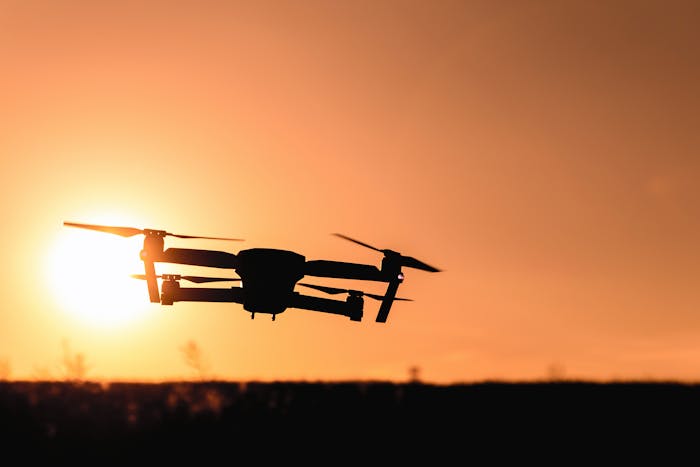Logistics are at the core of many businesses. The supply of goods is essential to productivity and customer satisfaction. The more efficiently you get goods out, the more customers you please and the more money you make.
Technology is emerging as a game changer in the logistics industry. It helps organizations speed up processes and increase efficiency to deliver goods faster and better. Specifically, two technologies, autonomous vehicles and drones, are leading the charge. Learn how they can transform how you do business.
Autonomous Vehicles
Autonomous vehicles are a cost-saving solution in the logistics industry. These self-driving vehicles reduce driver fatigue and related accidents. They optimize fuel efficiency and minimize the need for human operators.
What Tasks Do Autonomous Vehicles Handle?
These vehicles can be used for various purposes, such as:
- Last Mile Delivery: Last mile delivery is the final stretch of delivery, which involves running packages from the transportation hub to the final destination. These shorter distances are ideal for testing autonomous vehicles’ safety and efficiency.
- Long Hauls: As autonomous vehicles become more recognized for their performance, they will be integrated into longer hauls. In Texas, organizations have successfully used them to run the 240-mile stretch between Dallas and Houston.
- Warehouse Fulfillment: Autonomous vehicles can handle warehouse tasks such as forklift operation, picking and packing, and inventory scanning.
What are the Benefits of Autonomous Vehicles?
- Reduce Costs: Autonomous vehicles replace human drivers, reducing labor costs. Additionally, many are battery-powered and do not require expensive gas.
- Operational Efficiency: These vehicles do not encounter driver fatigue, reducing the risk of accidents and increasing productivity. They also optimize routes to save on gas and minimize drive times.
- Eco-Friendly Solution: As electric vehicles, the technology does not contribute to carbon emissions.
- Improved Customer Experience: Autonomous vehicles provide tracking updates so customers know exactly when packages arrive. They also deliver packages faster, improving customer satisfaction.
Drones
Also known as unmanned aerial vehicles (UAVs), drones are aircraft that have played a significant role in transforming the logistics industry. They travel a direct route to provide fast delivery. Drones are a cost-saving solution that improves customer satisfaction.
What Tasks Do Drones Handle?
- Last Mile Delivery of Smaller Packages: With public airspace being highly regulated, drones may not be the best choice for long-haul delivery. However, they are suited to last-mile delivery that spans shorter distances. Additionally, their small size makes them suited for delivery of smaller packages.
- Inventory Management and Order Picking: Drones can scan codes and track storage locations without the need for large warehouse vehicles. Their camera and scanner technology captures barcodes and transmits them to warehouse systems. They are especially adept at scanning information on higher shelves.
- Surveillance and Inspection: Drones can also perform security tasks in warehouse spaces. They can look out for unauthorized personnel and suspicious activity. If such activity is detected, they will trigger an alarm alerting staff members.
What are the Benefits of Drones?
- Expanded Access: A drone’s size and flying capabilities make it ideal for delivering in rural and remote areas with minimal road access.
- Faster Deliveries: As flying vehicles, drones don’t need to worry about getting stuck in traffic. Organizations that use drones also don’t have to spend time packing large trucks. As a result, drones deliver items faster.
- Lower Cost: Drones eliminate the need to purchase large, expensive fleets and delivery equipment. Companies also save on labor costs and gas.
- Accuracy: Failed deliveries cost companies money. Drones use AI and navigation technology for more accurate delivery, improving customer service and reducing costs.
- Sustainability: Drones are battery-powered, so they don’t produce carbon emissions that damage the environment.
What Technology Do Drones and Autonomous Vehicles Use?
- AI and Machine Learning: These technologies help vehicles navigate streets, optimize delivery routes, and identify obstacles.
- LIDAR and sensors: Light Detection and Ranging (LIDAR) and other sensors help vehicles avoid obstacles, comply with traffic rules, and make logistics decisions.
- GPS: High-precision GPS ensures vehicles arrive at their destinations.
- Cloud Computing: Cloud platforms process data collected by vehicles for real-time communication, route adjustments, and fleet management.
- 5G Connectivity: 5G’s low latency and high speed allow vehicles to communicate with warehouses and other vehicles in real-time to improve safety and efficiency.
Want to learn how modern technology can improve your organization’s operations? Sign up for our newsletter today.


0 Comments